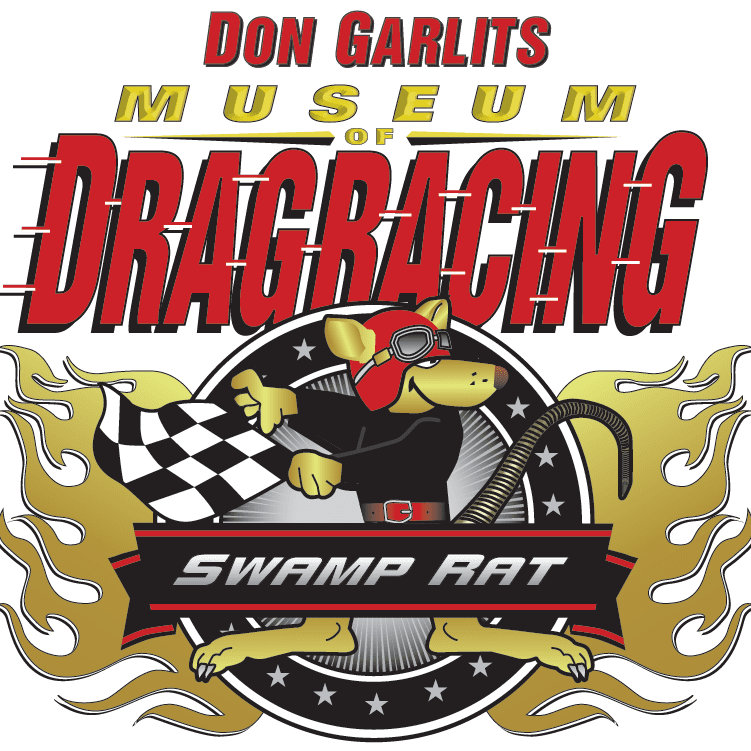2018
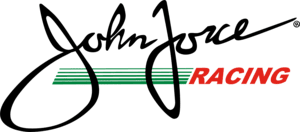
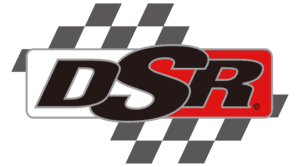
Event Sponsors John Force Racing & Don Schumacher Racing Held on Thursday March 15, 2018
Hilton University of Florida Conference Center, Gainesville Florida.
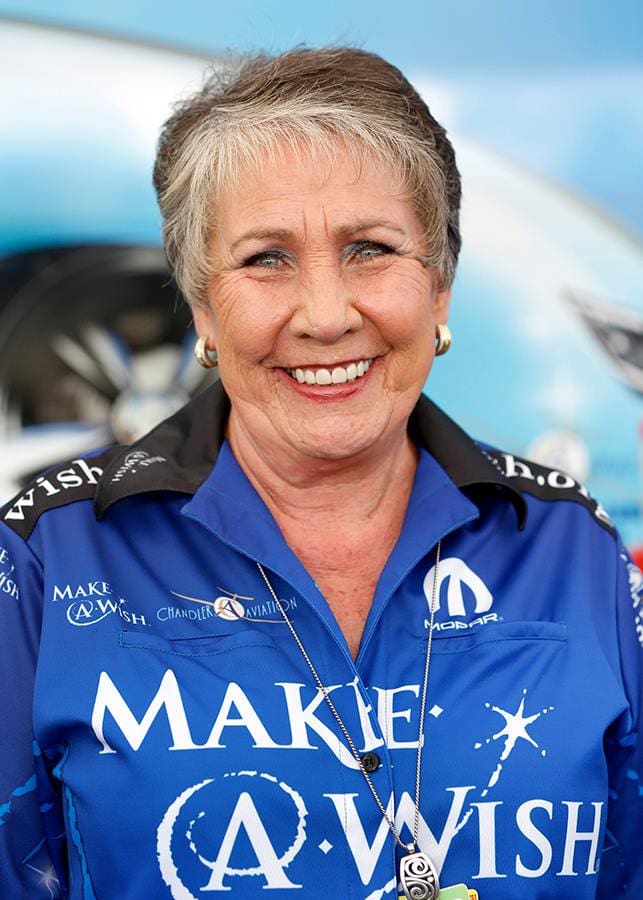
Terry Chandler
Pat Garlits Memorial Award
Terry Chandler grew up in an oil field family in southeastern New Mexico, since her late father, John R Gray owned Marbob Energy. As a young adult one of her interest included watching her younger brother, Johnny Gray, race cars. As she grew older Terry developed a special interest for children in need and for our military veterans. Fortunately, Terry found a way to combine her love of racing and helping people while having a lot of fun doing it.
Terry’s interest in drag racing started early as a result of her younger brother, Johnny, being involved with racing. Johnny was involved in many forms of racing including NHRA pro stock and eventually funny car racing. In the early years Terry would go along with Johnny; you could find her selling T-shirts at the local tracks and helping prepare Johnny’s car for a run. These were the days of budget racing.
As Johnny moved up in the pro funny car ranks standings Terry continue to be her brother’s biggest fan attending most of his races. As they grew older and their financial status change from the early days of racing on a budget; Terry and Johnny decided to honor their late father by co-sponsoring the Pitch Energy funny car driven by Johnny. The car had the image of their father for Johnny’s last year of racing. With his retirement looming and recognizing his sisters love of NHRA racing Johnny suggested she consider sponsoring a funny car team herself.
While Terry could have chosen to do many different things with her resources Terry accepted her brother suggestion. She decided that if she were to sponsor a car it would be as she called it, “a giving car”. Teaming with Don Schumacher racing Terry began by backing the Make-A-Wish funny car driven by Tommy Johnson Jr. who assumed Johnny seat. A year later the opportunity arose to sponsor a second car driven by World Champion Jack Beckman; the Infinite Hero funny car. Both organizations are nonprofits and rely upon contributions for support. Terry provided both of these charities with a tremendous amount of exposure from the 330 MPH billboards. With Tommy Johnson in the driver seat the Make-A-Wish car has notched eight wins and Jack Beckman Infinite Hero Foundation team has appeared in the winner’s circle 11 times.
Through her sponsorship with Make-A-Wish and the Infinite Hero organizations Terry was able to make the dreams of children with terminal illnesses and wounded soldiers come true. Terry arranged for these individuals to not only come to the drag races but to be a part of the teams (giving them access not only to the pits but also the team areas including standing at the starting line). Terry also yearly- during the NHRA US Nationals in Indianapolis, Indiana- provided her time, funding, and support to the Riley Hospital for Children in Indiana.
Perhaps Terry’s greatest joy was standing at the starting line cheering on her teams (including the pro-stock cars of nephew Shane Gray and his son Tanner). Her passing in 2017 has left a very large vacancy at the starting line and emptiness in the hearts of both racers and spectators.
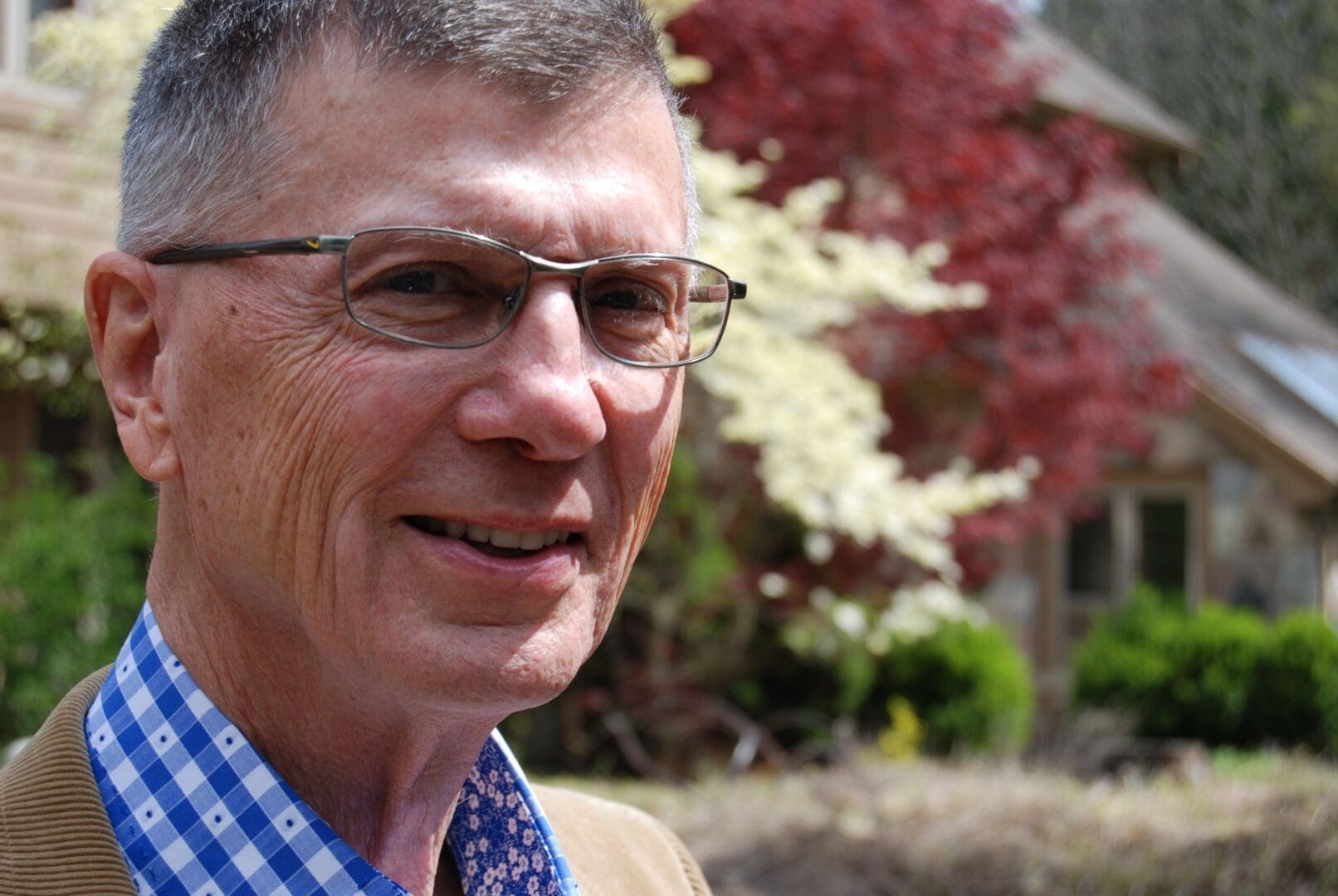
Herb Fishel
Founders Award
Growing up in Winston-Salem, North Carolina, Herb Fishel watched short track racing at Bowman Gray Stadium, read about Zora Arkus-Duntov in Hot Rod Magazine and worked on cars with his uncle William. He consumed every scrap of information he could find in the local paper about the Indy 500, Daytona 500, the 24 hours of Le Mans, and the Mille Miglia.
He came up with an idea: racing could be, and should be, and accelerated test laboratory for an automotive manufacturer. However, to do it he had to be the first in his family to get a college education. Technically and scientifically he was initially ill-prepared to face the engineering challenges he encountered upon enrolling at North Carolina State. But he was determined to go racing, and that grit propelled him to earn a degree in Mechanical Engineering from NC State in 1963.
His first airplane trip was to Detroit to interview with General Motors. After the interview was done, he was asked if there was anything else, he would like to do while in Detroit. He didn’t hesitate, “I want to meet Zora Duntav”, he said. Before the day was over Fishel met his boyhood, idol and agreed to begin working as an engine draftsman.
He held onto his childhood belief that racing was essential to an automaker especially the major events: the Rolex 24, they Daytona 500, the Indy 500, and the 24 hours of Le Mans. Driven by the strong work ethic he learned from his father, Fishel made his dream a reality. In 2001 General Motors won the Rolex 24, the Daytona 500, the Indy 500, and had class win in the 24 hours of Le Mans. Fishel guided GM to many driver and manufacturer titles in NASCAR, Indy car, drag racing, sports cars, and off-road racing.
He retired as the Executive Director of General Motors Racing in 2003. Afterwards he completed the Mile Miglia route through Italy, driving a 1953 Ferrari 250 MM co-piloted by his wife Sandy.
Fishel feels his greatest achievement to be one that carries no trophy or award. In the early 1990s he pioneered the Motorsports Safety Initiative for General Motors. He assembled a research and development team that led to innovations that save thousands of lives. His team studied accidents on the race track with test dummies, pioneered black box recorders in Indy cars, roof flaps and restraints in NASCAR, and structural and impact absorption improvements used in almost every form of racing.
During the energy crisis in 2006 he foresaw the future motorsports is being defined by global concerns for energy supplies and climate change. His vision that the great race of the 21st century would be for economic, socially responsible, and sustainable transportation is now a reality.
Fishel has received many awards for his contributions to motorsports. He was named by Hot Rod Magazine as one of the “100 Most Important People in the First 50 years of Hot Rod” (1997), and Racer Magazine as one of the “Most Influential People in Racing from 1996 to 1999”. He was presented with the “Spirit of Le Mans” award by the race organizers (2003), and drove the pace car at the 2003 Indy 500. In 2005 Herb received the distinguished Engineering Alumnus Award from North Carolina State University, plus was inducted into the SEMA Hall of Fame. In 2015 he was inducted into the Corvette Hall of Fame. Automotive News Magazine honored the 100 years of Chevrolet in 2011 naming Fishel as one of the “100 Most Influential People” stating, “Fishel put Chevrolet in the winner’s circle”.

Greg Sharp
Greg Sharp’s love affair with hot rodding and drag racing began as a highly curious “car crazy” 12-year-old who devoured the enthusiast magazines of the 1950s. Absorbing their contents like a sponge he later became an expert on the history of hot rodding and virtually all forms of motorsports. His first drag race was at age 13 at Lions Dragstrip and he still remembers that Jack Chrisman in the “Sidewinder” was top eliminator with the stunning 9.05 second ET.
He has been described by several magazines as the “go to guy for data on the history of hot rodding and drag racing”. When it comes to knowing the history of our sport, having written documentation, and photos to back up his knowledge, Greg is the man.
Sharp grew up in San Pedro, California and went to school with such drag racing notables as Carl Olson and Mike thermos. A neighbor worked for Frank “Ike” Iacono and having Ike’s dragster pull up in front of his house on its trailer was experience he would never forget. Years later he drove a dragster at Orange County and was thrilled with its 150 MPH ride.
In 1967 Greg began his day job as a member of the Los Angeles Police Department retiring in 1995. However, that did not keep him away from his love of hot rods and motorsports.
More than a historian Greg Sharp is a participant. He joined the famed LA Roadsters Club with a 1929 roadster pickup he owned for over 30 years. Through the club he got the opportunity to drive on Bonneville salt; meeting and becoming friends with many of the legends of the land speed fraternity. He has served as an International Show Car Association official and Judging Supervisor for over 10 years. He helped select the prestigious “America’s Most Beautiful Roadster” at the Oakland Grand National Roadster Show. In 1989 Greg began acting as Master of Ceremonies and historian for the show.
In the early 1970s Greg began to use his storehouse of knowledge to write hundreds of magazine articles ranging from the history of “America’s Most Beautiful Roadster” to pieces on historic Indy cars plus personality profiles from AJ Foyt to George Barris. He has an extensive collection of historic hot rod and custom car photographs which have been invaluable to the restoration of numerous historical hot rods and race cars.
Falling retirement, he was named director NHRA Historical Services where he had a key role in the formation of the Wally Parks/NHRA Motorsports Museum. He has served as curator since its opening in 1998. Working closely with several drag racing Hall of Fame members he’s helped to locate vehicles and produce a wealth of information that makes visiting the museum educational and enjoyable. Many of his personal photos and artifacts are on display including rare race programs dating before the 1920s.
He served as event director of the California Hot Rod Reunion for several years and is credited with coining the term “cackle fast” after Steve Gibbs created the concept that has become such a major part of historic drag racing activity.
Greg is a member of the Oakland Grand National Roadster Show Hall of Fame and was named The Dry Lakes Racing Hall of Fame Historian of the Year. He received the Dean Batchelor Award from the Motor Press Guild for the “Best Article of 2012” for his story in “The Rodders Journal” on the history of the famed So-Cal streamliner, ironically a car driven by Batchelor.
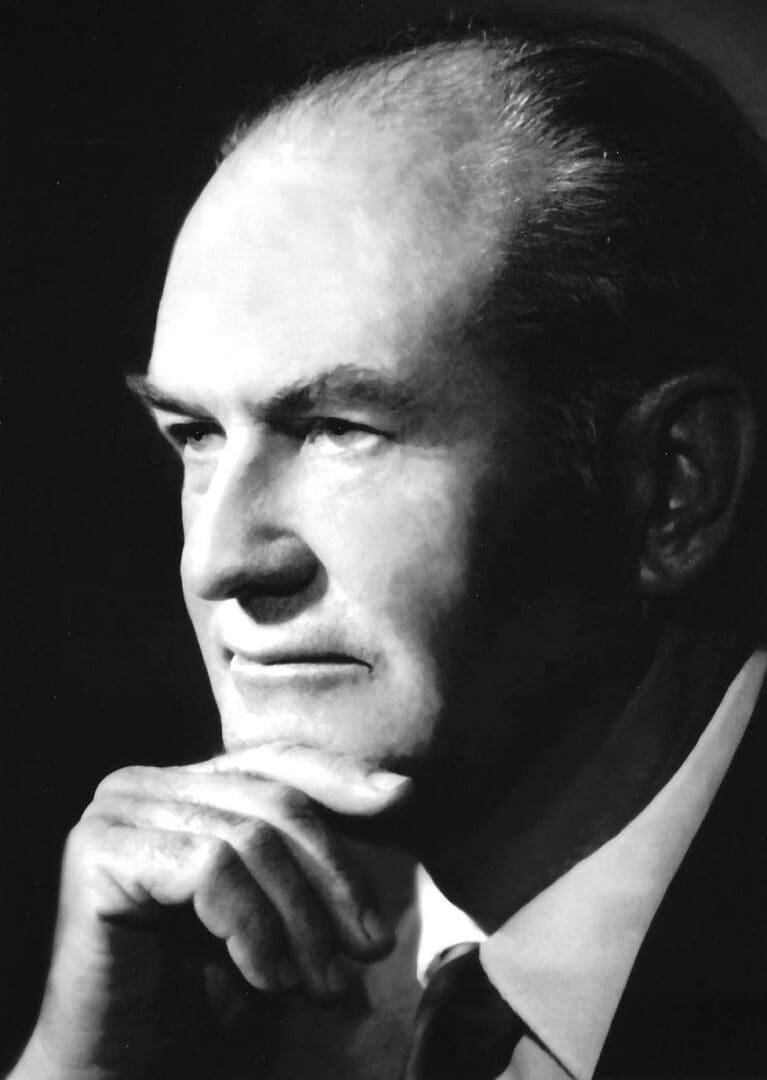
Oliver “Ollie” Riley 1918-1992
Unlike most of the honorees of the sport, Ollie Riley didn’t grow up around high-performance cars but his interest in mechanics and electricity were similar to those who wished to go quick and fast.
Born and raised on a farm in Stanford Kansas; when Ollie was old enough to start using tools his curiosity of things electrical guided him to make his own toys which foretold his future. Long before transistors were created Ollie created his own radio’s powered by batteries connected in series. In high school and college Ollie repaired radios for extra spending money. His devotion to the emerging science of electronics earned him a Bachelors and a Masters of Science degrees in Electrical Engineering at Kansas State University graduating with honors. He worked as an instructor at Kansas State University after graduation.
During World War II he worked at Massachusetts Institute of Technology’s radiation lab on a top-secret state-of-the-art radar bomb site; testing it in Florida onboard a B-24. After the war he worked for a short time at General Electric but moved to La Vern, California, where he joined General Dynamics Convair Division designing guided missile systems.
In 1954 while attending a Dale Carnegie class he met Bud Coons who was a Pomona, California, Police officer and the Field Director of the fledgling NHRA Safety Safari. Coons learned of Ollie’s electronics background and felt that Riley might be able to help develop an accurate timing system.
Ollie’s ingenuity and drive for perfection made him the ultimate problem solver; an attribute that was stimulated by Coons inquiry about developing an accurate timing system. Ollie built the first timing set on his kitchen table which was accurate to within 0.001 second. It had the advantage of also being modular which allowed for easy replacement of a defective components. Soon Ollie was mastering the challenge for other precision drag racing timing equipment that brought the sport to a new level.
After transforming drag racing’s timing system Ollie left the aerospace industry to open the doors of a new family owned and operated electronics business-Chrondek Electronics. It was a specialty electronics manufacturer that was dedicated to producing timing equipment for all types of sports.
During the late 1950s Ollie observed several starters were making moves that allowed a driver to predict when he would raise the flag to start the race. To correct this Ollie worked to develop the first step light starting system which debuted at the 1963 US Nationals in Indianapolis, Indiana. In addition to providing a starting system the device also had a built-in “foul light” that turn red if the driver left early. A year later pre-stage bulbs were added to assist the driver in staging correctly. Because of its overall appearance the new starting system was soon dubbed the “Christmas Tree”.
The “tree” was not initially accepted by the racers because they had become accustomed to reading the flagman’s body language and were able to jump them. Although it took some time to become accustomed to the new procedure racers soon recognized the advantage of consistent and fair starts the tree offered which led to its use at drag strips everywhere. Ollie spent nearly two decades perfecting his Chrondek timing systems and in 1972 he sold the business to Aero-Marine Electronics.
Ollie’s contributions and groundbreaking innovations have help make drag racing what it is today. While Ollie passed away in 1992; his family proudly carries on his life story as a family man and inventor who changed the sport dramatically. Today Ollie’s inventions can be seen at the NHRA Museum in Pomona, California.

Jim Oddy
An early car enthusiast, at 16, Jim Oddy joined the Torrid Torkers a Buffalo, New York car club in 1957. Jim entered his inline six-cylinder 1936 Chevy Coupe into competition and, on his first time out, won his class. He was hooked leading to his lifelong career.
He became a fabricator and an engine builder and learned many of his skills from his father, Don Oddy, a shipyard welder and fabricator. These were lessons well learned for Jim was able to incorporate them into building his own cars. Over the years the Western New York native became a feared competitor and a highly respected builder.
Jim and his father built his first race car it 1960, C/Gas 1936 Chevy Coupe powered by a 302 Chevy. The car was an immediate success setting a new AHRA C/Gas class record at 12.20 seconds and 118 MPH. Jim attended the 1964 NHRA US Nationals as a spectator which inspired him to build a B/Gas Anglia coupe powered by a 302 Chevy. He returned to Indy the following year with the Anglia and one the class cementing Oddy’s reputation.
What followed from 1969 to 1974 were a succession of winning cars; a blown Chrysler powered 1948 BB/GS Austin sedan, and Opel GT body BB/GS coupe, and a BB/A Fiat blown altered. These cars carried Oddy to another US Nationals win plus two Division I titles.
Jim’s on-track successes with his creations led him to open the doors to Oddy’s Automotive in Elma, New York in 1975 specializing in supercharged engines of all makes and for a world-wide variety of applications. The demands of building quality engines cost him to scale back his racing.
In 1987 Jim again got the competition itch this time for the new IHRA Top Sportsmen class with a highly potent blown Chrysler powered Chevy Beretta coupe with the talented Fred Hahn at the wheel and Jim tuning the car. It was followed by the iconic flat black blown Corvette which set the top sportsmen class on its ear with a stunning 6.69 second pass at the IHRA race in Darlington, South Carolina. The car moved to the pro modified class in 1990 and won six consecutive Super Chevy events in 1996 and 10 more in 1997, plus the Pro Modified World Championship both years. The Hahn & Oddy magic continued, winning the 2000 IHRA Pro Modified World Championship and the 2003 NHRA AMS Pro Modified World Championship.
As time went on the pressure of the business and race travel started to take their toll on Jim. He retired to Mooresville, North Carolina but his love for building engines and race cars never diminished. Jim’s love for the Gasser’s cost him to build a 1934 Willie’s AA/G two-door sedan, “The Junkyard Dog”, to race at nostalgia Gasser meets with Junior Ward at the wheel.
Throughout the years Jim winning career and is considered one of the founding fathers of the pro modified class. His body of work has gained him many honors including: induction into the East Coast Drag Times Hall of Fame in 2004, the Lancaster Speedway inaugural class of the Wall of Fame 2015, and the NHRA lifetime achievement award.
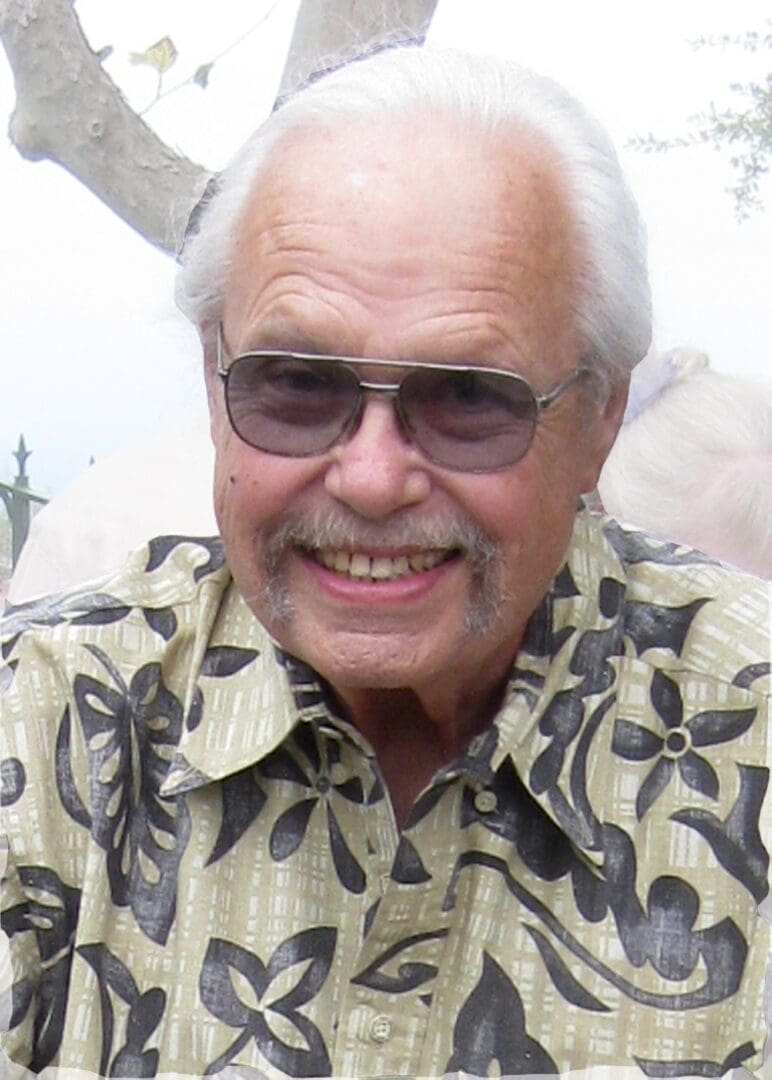
Roy Fjasted 1935-2018
Roy’s love for hot rodding began in his early teen years and has only grew with the passage of time. In 1951 he entered his first drag race, driving a 1950 Chevrolet, at Santa Ana Dragstrip; winning his first trophy the following year. Roy was a member of the Burbank California based “Road Kings Car Club” whose member roster included a “Who’s Who” of drag racing stars such as Tommy Ivo, Don Prudhomme, and Bob Muravez. For a young man the car club was a great place for learning new equipment, exchanging ideas, and gossip among the members.
Roy built his first dragster in his home garage in 1955 which incorporated new ideas and construction using a Chrysler engine for power and nitromethane for fuel. This established Roy on his fabrication career path for which he became well-known.
Four years later, in 1959, Roy went to work for Scotty Fenn at Chassis Research shop where he was able to learn even more about building safe and competitive cars from one of the leading builders of the time.
By 1965 Roy had set out on his own opening his own chassis shop Fjastad’s Speed Products Engineering. The name was later shortened to Speed Products Engineering, and more commonly known as SPE. Roy’s talents and passions didn’t just lie and building chassis. He also produced his own hydro-forms safety bell housing’s, two-piece couplers, disc brakes, front wheels, steering boxes, and torsion bar assemblies. This also included mass-producing the many little tabs for mounting various pieces of equipment.
It didn’t take long for competing chassis builders to realize they could save a great deal of time and money by purchasing the very uniform SPE parts. Soon these pieces began to be a staple in the chassis building market and helped cement the SPE brand.
As a competitor Roy began competing at the Bonneville Salt Flats in the early 1950s with a car based around a war surplus aircraft belly fuel tank. He raced the belly tank car in the A/GRMR class at Bonneville every year until 2012.
In 1974 Roy sold SPE. Two years later he opened the doors of the Deuce Factory and went from building race cars to building street rods. After he started building street rods Roy noticed there was a demand in the market for 1932 Ford frame rails and, as with SPE days, began building and marketing his own improved version of the Ford style rails. In Roy’s typical approach to a project not only did he began to produce frame rails but did extensive research and the market’s needs. Soon the Deuce Factory launched a complete line of street rod suspensions and other sought-after parts and pieces.
With retirement on the horizon Roy sold the Deuce Factory in 1992 but immediately discovered that this wasn’t his cup of tea. Roy’s soon established another company, Full Bore Race Products, and began manufacturing line of specialty tools and fasteners. Roy ran the company until he was 80 years old.
Roy has been recognized as one of the leading chassis builders by his peers and the drag racing community. One of Roy’s most rewarding accomplishment was becoming a lifetime member and serving for six years as President of the elite Bonneville 200 MPH Club. Taking pride in contributing to and supporting the club’s day-to-day affairs and endeavors.
Roy was elated when Don Garlits called him advising he had been inducted into the International Drag Racing Hall of Fame. Roy told everyone how much he looked forward to attending the event and receiving this proud recognition. Unfortunately, Roy passed away two weeks prior to the ceremony and banquet.
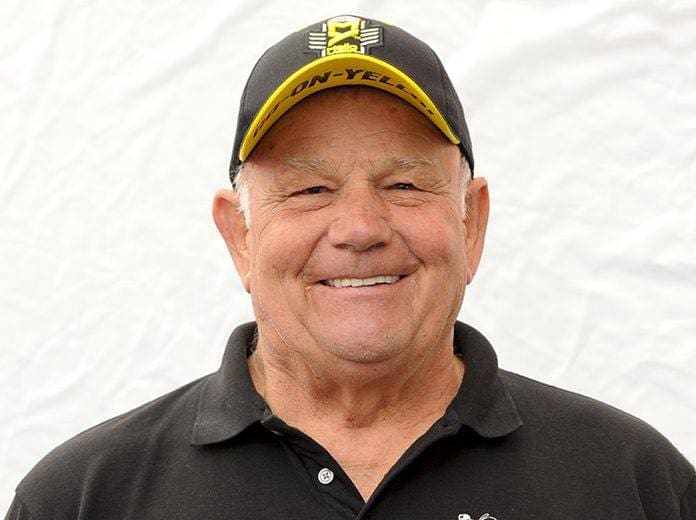
Gary Densham
One might consider Gary Densham of Menefee, California as the typical “grew up in Southern California” racer. Bellflower Boulevard was the place to go to show who had the fastest car. Lyons, Irwindale, and Orange County drag strips were close by. High school time was spent playing football Friday night and racing at the track on Saturday.
Densham’s career has been defined as a competitive, low-budget funny car driver. But he had a five year career in A/Gas Supercharged cars before beginning to race funny cars in 1971. Tight budgets forced him to wear many hats during the early part of his career serving as crew chief, owner, and driver. With the “little guy low-budget” profile Gary exemplifies many of the fuel class racers of the time. He made the most of his resources winning races in NHRA Pacific Division (division seven) and winning the 1982 Division 7 Funny Car Championship.
A high school auto technology teacher at Gahr High School (Cerritos California) his cars have always been called “Teacher’s Pet”. He has used his teaching expertise to mentor many students serving as crew members; a number who have gone on to work for other teams.
One of Gary’s proudest achievements has been his career in Australia. His first trip in 1974 with John Force was spent helping to keep John’s car running and teaching him some of the finer points of driving. Other tours “down under” in 1978, 1979, 1982, and 1986 saw Densham undefeated against him American and Australian racers. In 1995 he won the Australian National Championship.
His biggest success came in 2001 to 2004 while driving for John Force Racing. Finally, Gary had the funding and data needed to win an proved he could. He delivered eight wins, six number one qualifiers, set a national speed record (326.87 MPH), capped off by a US Nationals victory and the Skoal Showdown double up. Twice he finished fourth in the final point standing. Also, Gary and crew chief Jimmy Prock won Car Craft Magazine’s Person of the Year award.
Through his career Densham had three IHRA wins. Was the AHRA Funny Car National Champion in 1989, 1990, 1996, 1997, and 1998. As an independent racer Gary was the 13th member of the Castrol 4-Second the teenage phenom Club in 1998. He had to low qualify positions and finished in the top 10 of NHRA points on four occasions: 1995, 1996, 1997, in 2008.
As a crew chief he tuned his son Stephen, a former winning Junior Dragster driver, to the NHRA Heritage Series Championship in funny car in 2015.
As for the future Gary plans to keep racing as many races a year as funding allows and keep tuning Stevens nostalgia funny car. In fact, realizing he was going to be in Gainesville for the International Drag Racing Hall of Fame banquet and ceremony Gary told friends, “Hell let’s do the Gatornationals”.
If you see him at a race know he probably drove the rig there and set up the pit area. He will consult on the turning decisions, work on the car, and drive. Gary will have the most fun doing all of this because he just loves drag racing.
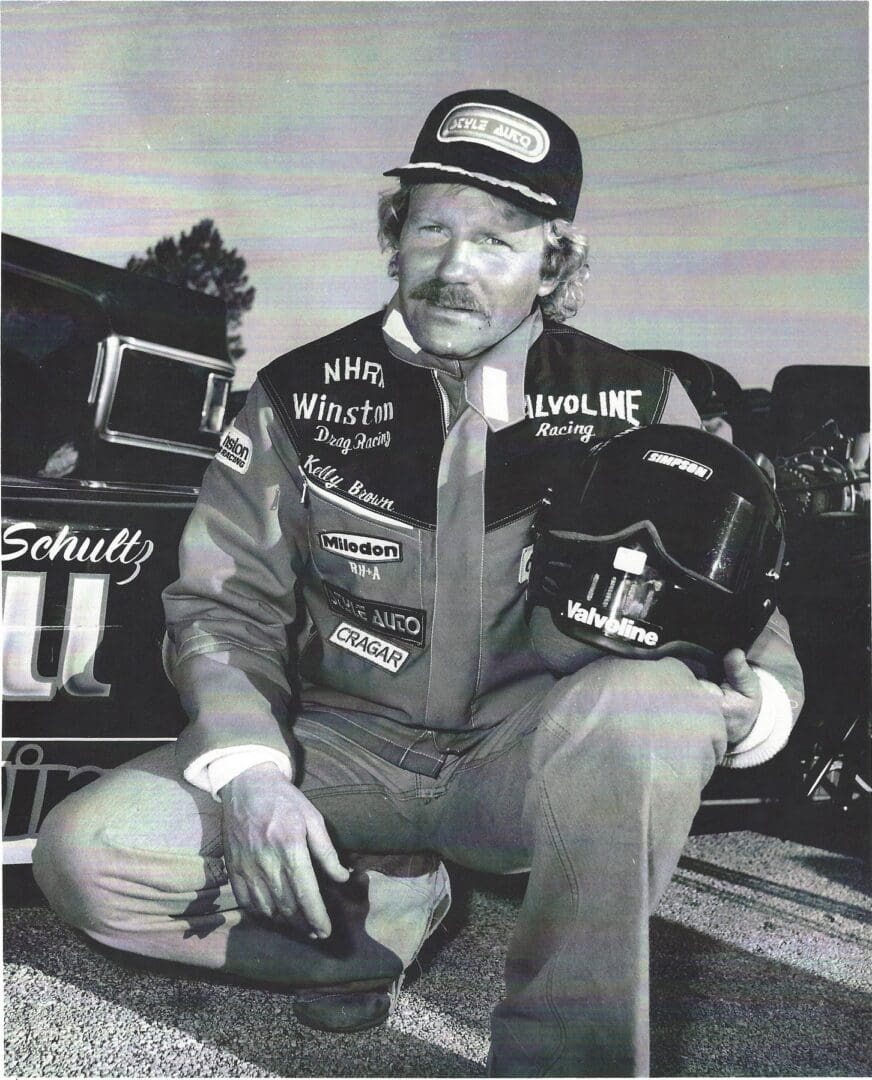
Kelly Brown
Kelly Brown was born in Hollywood, California and while he grew up in San Fernando Valley he retained his Hollywood roots by making his living in the movie and TV world as a producer, stunt driver, and technical advisor.
However, before he entered into the stunt driving world Kelly had already notched a very impressive record as a top race car shoe. Growing up one of Kelly’s best friends was Don Prudhomme’s brother, Manette Prudhomme, so he was exposed to drag racing and some of the early top competitors during his teens. One of his first efforts at drag racing was assisting Manette and Don run the Snakes Buick powered dragster at The Pond one Sunday. From that day forward Kelly was hooked.
In 1964 Brown had his first ride in the seat of Mel Cohen’s “L&M Special” injected Chevy junior fuel dragster. Not long after that followed another injected Chevy powered junior fueler owned by Vaughn Raviart. Kelly eventually moved into the driver seat of Art LeColst and Sonny Diaz’s blown Chrysler powered AA/Gas dragster.
Kelly secured his first top fuel win in 1966 in Vaughn Raviart and Art Tapper’s blown Chrysler AA/Fuel dragster at the legendary Lions Dragstrip. After his first trip to victory circle, Kelly soon became a frequent visitor at Lions driving for some of the sports legends including: Jim Bissett, Lou Baney, Leland Kolb, Barry Setzer, and Don Racherman.
In the 1971 season Kelly briefly drove Barry Setzer’s blown Chrysler powered Vega AA/Funny Car and notched a runner-up spot at the NHRA Springnationals. In 1973 he accepted the driving chores for Don Racherman’s Wonder Bread Vega wagon but in a noncompetitive car it was a less than fun season.
Making a living drag racing at the time was very difficult and while known as an outstanding driver Kelly was also involved in the film industry working in its production arena. Brown decided to spread out his career and join the Screen Actors Guild. Almost immediately he was working as a full-time stunt driver in movies, television, and advertising commercials taking a five-year vacation from racing.
In 1978 with his stunt driving career doing very well he returned to drag racing at the wheel of Jim Bissett and Mike Drake’s blown Chrysler AA/Fuel dragster. The team started this 1970 season with an off the trailer qualifying run of 5.87 seconds at the NHRA Winternationals in Pomona, California. They subsequently went on to win the event. Building on the outstanding debut the team went on to runner-up at the Gatornationals in Gainesville, Florida and won the Cajun Nationals in Baton Rouge, Louisiana, the Springnationals in Clovis, Ohio, and the Molson Grant Nationals in Sanair, Québec, Canada. Kelly ended the season by winning his first NHRA Winston World Championship title. He was named “Driver the Year” and “Person of the Year” by Car Craft Magazine. He was also named Car Craft Magazines All-Star Drag Racing Team.
The following year Kelly moved to the driver seat of Bill Schultz “Over the Hill Gang” AA/Fuel dragster. Winning the Gatornationals, the Cajun Nationals, the Mile-High Nationals in Denver, Colorado, and the US Nationals in Indianapolis, Indiana. That year Kelly claimed the number two spot in the NHRA World Championship title.
After driving Raymond Beadle’s Blue Max AA/Fuel dragster for part of the 1980 season Kelly made the difficult decision to permanently retired from racing to concentrate on his film career. Kelly built a similar reputation in the film industry as a stunt driver, producer, and technical advisor for various films including his involvement in the Shirley Muldowney movie “Heart Like A Wheel”. Kelly provided a lot of the equipment, technical advice, and driving time for the making of the movie.
Today Kelly enjoys complete retirement at his ranch in Northern California where he spends his time caring for his horses.
